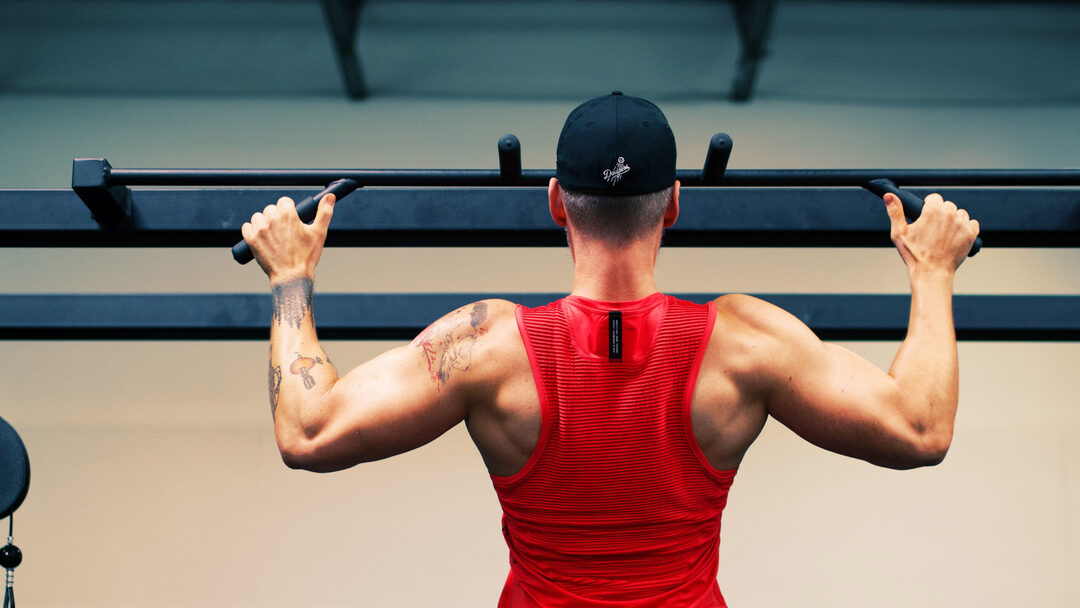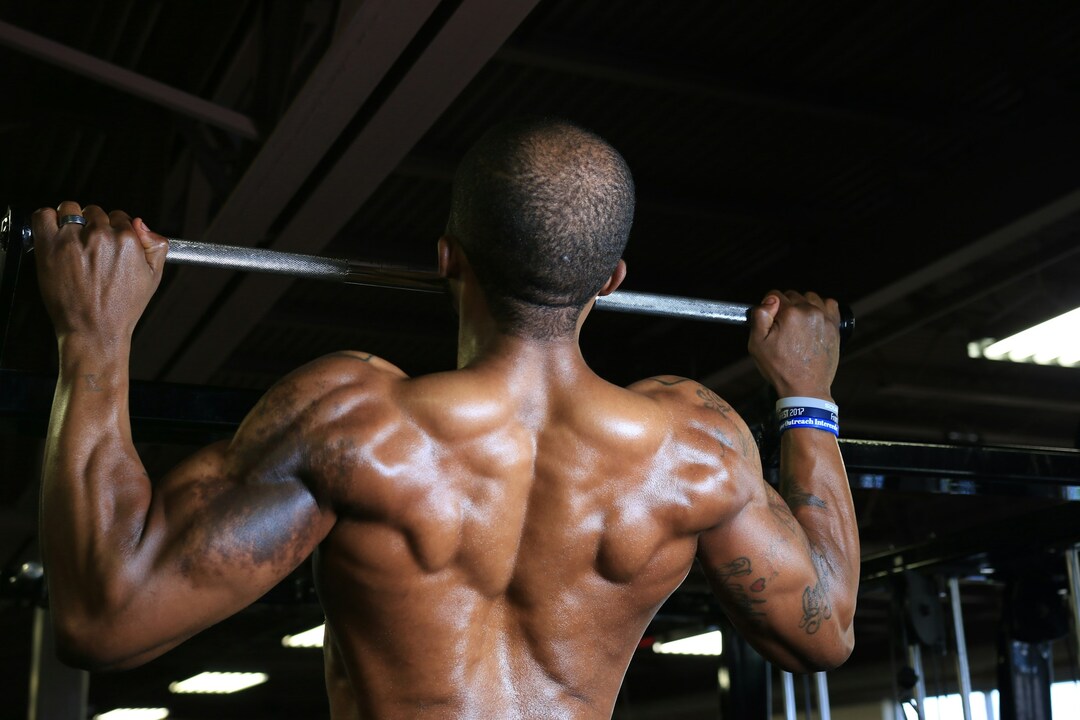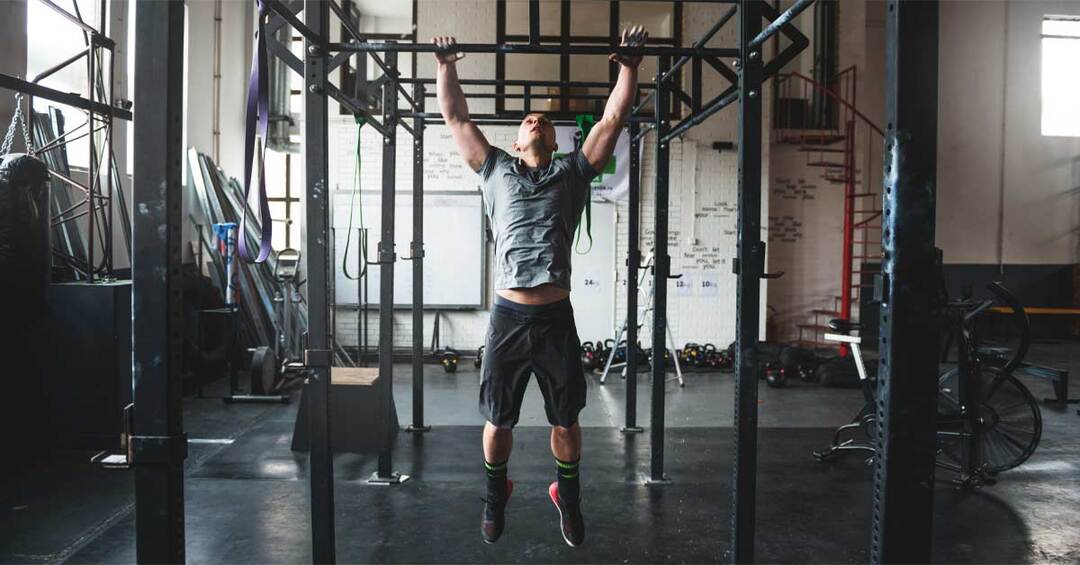Do Pull Ups Work Chest?

Wondering do pull ups work chest? Learn how this classic back exercise can still engage your chest muscles and improve upper-body strength.
Want a bigger chest but not sure if pull-ups will help your pectorals? On forums and in Best Fitness Apps guides, people ask whether pull-ups work the chest or just hit the lats and biceps. This guide breaks down muscle activation and recruitment, compares pull-ups with push-ups and the bench press, and examines grip width, range of motion, and hypertrophy, so you get a clear, well-grounded understanding of how pull-ups affect the chest muscles.
GetFit AI's AI fitness app helps you turn that understanding into practice with guided progressions, simple form cues, and personalized routines that show where you feel work and how to tweak exercises for real chest strength and size.
Summary
- Pull-ups can meaningfully load the chest when you bias horizontal force and timing, with RunRepeat finding that targeted pulling variations can increase chest activation by about 20%.
- Chest transfer requires manipulating three training variables together —direction of force, load density, and timing —rather than chasing high-rep sets alone.
- Program pull-ups three times per week with distinct goals and keep total weekly time under tension between 90 and 180 seconds per muscle group to preserve quality and drive transfer.
- Specific set and tempo rules shift recruitment, for example, 4 sets of 5 with a 3 to 5 second descent and a 1 to 2 second sternum-focused pause, or cluster sets like 5 clusters of 3 with 20 seconds rest.
- Objective markers predict real progress. Straight Talking Fitness reports a 50% average increase in pull-up count in 6 weeks with proper training, and 80% of consistent trainees can perform at least one pull-up after 3 months.
- Targeted progressions and accessory work speed transfer. Coaching evidence shows that an 8-week block combining band assistance, inverted rows, and negatives moved most novices from zero to controlled eccentrics and from about 2 to 4 partial concentric reps.
- GetFit AI, an AI fitness app, addresses this by using objective markers, such as band assistance level and top-hold seconds, to auto-adjust grip, tempo, and assistance during progressive microcycles.
7 Best Beginner-Friendly Pull-Up Exercises for the Chest

You can use each of these seven pull-up variations to shift load toward the chest, provided you tweak grip, torso angle, and tempo; the mechanics are simple and repeatable, not mysterious. Below, I’ll walk through the specific cues, common beginner mistakes, and the exact progressions that move a trainee from assisted reps to chest-focused control.
1. Wide-Grip Pull-Ups
Wide-grip pull-ups target the upper and outer chest muscles, as well as the lats and shoulders. This grip variation helps develop a broad, strong upper chest and improves overall upper-body muscle balance. The wider hand placement increases chest activation compared to narrower grips.
Instructions
- Grip the pull-up bar with your hands wider than shoulder width.
- Hang fully with your arms extended and shoulders relaxed.
- Retract your shoulder blades and pull your chest up to the bar.
- Lower yourself down slowly, maintaining control throughout the movement.
2. Mixed-Grip Pull-Ups
Mixed-grip pull-ups involve one palm facing you and the other facing away, which varies muscle activation. This style engages the chest, biceps, and forearms differently on each side, promoting balanced upper-body strength and improved grip endurance.
Instructions
- Place one hand with your palm facing towards you and the other away.
- Hang from the bar with arms fully extended.
- Pull your chest towards the bar, focusing on chest contraction.
- Slowly lower back down with controlled movement.
- Alternate hand positions in subsequent sets for balanced development.
3. Close-Grip Pull-Ups
Close-grip pull-ups target the inner chest and triceps, helping define the lower chest. This grip narrows hand placement, enhancing triceps recruitment and creating a stronger overall upper-body push-pull balance.
Instructions
- Grip the bar with your hands closer than shoulder width.
- Begin hanging with your arms fully stretched.
- Pull your chest up, concentrating on squeezing the inner chest.
- Maintain triceps engagement throughout the movement.
- Descend slowly to complete the repetition.
4. Assisted Pull-Ups With Machines
Using assisted pull-up machines helps beginners build chest and upper-body strength by providing counterbalance support. This reduces the load until you gain enough strength to perform unassisted pull-ups, making it ideal for gradual progress.
Instructions
- Adjust the machine to the preferred assistance level.
- Grab the bar and hang with your arms extended.
- Pull yourself up with focus on chest activation.
- Lower yourself carefully, maintaining control.
- Gradually decrease assistance as strength improves.
5. Band-Assisted Chest Pull-Ups
Band-assisted pull-ups use resistance bands to reduce the effective weight you lift, ensuring proper form and focus on chest muscles. The band offers support during both the upward and downward phases for a safer, controlled workout.
Instructions
- Attach a resistance band securely to the pull-up bar.
- Place your foot or knee inside the band loop for support.
- Hang from the bar and pull yourself up, emphasizing chest contraction.
- Lower down slowly, keeping control.
- Switch to lighter bands as you build strength.
6. Inverted Row Pull-Ups
Inverted rows are a beginner-friendly horizontal pulling exercise that simultaneously targets the chest and upper back muscles. This aids balanced muscle development and strengthens the muscles needed for vertical pull-ups.
Instructions
- Position a bar at waist height or use TRX/suspension straps.
- Lie beneath the bar and grip it with an overhand grip.
- Keep your body straight and pull your chest toward the bar.
- Squeeze your chest muscles at the top.
- Slowly lower your body back to the start position.
7. Negative Pull-Ups
Negative pull-ups focus on the eccentric (lowering) phase of the pull-up, which helps increase pulling strength and chest muscle control. This technique is excellent for beginners who struggle with full pull-ups.
Instructions
- Start at the top of the pull-up position with your chin above the bar.
- Slowly lower yourself down, emphasizing chest engagement and muscle control.
- Use a bench or step to climb back up to the top position.
- Repeat, gradually increasing the lowering duration for strength gains.
These seven items align with the exercise set compiled by Hevy - #1 Workout Tracker & Planner Gym Log App, and they mirror a community-curated list in 7 Best Beginner-Friendly Pull Up Exercises, Facebook Group Post, both of which frame the same practical progressions for starters. That cross-check matters because repetition across sources shows these variations are not random; they are reproducible building blocks.
Most people program pull-ups the same way because it is familiar: a few sets, max reps, and then frustration when chest gains lag. That approach works early, but the hidden cost is slow transfer to chest development, creeping imbalances, and wasted months chasing form without a clear progression. Users find that solutions like GetFit AI, which provide athlete-backed biomechanical cues and adaptive progressions through conversational coaching, compress the trial-and-error phase and maintain consistent chest targeting as volume and intensity increase.
A small analogy: think of the chest as the front cables of a suspension bridge, the grip and torso angle shift, which cables carry the stress; the proper combination routes tension through the chest instead of dumping it into the lats. Use tempo, angle, and assistance deliberately, and treat negatives and inverted rows as the scaffolding that lets the chest pick up load safely.
That feels like progress, until you discover the single variable that actually flips how a pull-up loads the chest.
Related Reading
- Best Fitness Apps
- How Many Pull Ups Should I Be Able To Do
- Average Bench Press By Age
- Average Grip Strength Male
- Average Bench Press
- How Much Does A Bench Press Bar Weigh
- Average Male Bench Press
- How Much Can The Average Man Bench Press
- Grip Strength Chart
Do Pull-Ups Work the Chest?
.jpeg)
Pull-ups do work the chest, but not the same way a bench press does; they recruit the pectoral fibers as part of a coordinated pulling pattern, and with deliberate programming and cueing, you can make that contribution meaningful for strength and hypertrophy. The trick is treating pull-ups as a force-vector and timing problem, not just a reps contest.
How exactly does the chest get involved during a pull-up?
Chest contribution rises when the pull creates a horizontal adduction moment at the shoulder and when the clavicular head is placed at a favorable length and angle. In plain terms, when your hands, torso angle, and elbow path produce a sideways component of pull, the pectoralis major shifts from stabilizer toward prime mover. That mechanical shift is measurable: according to RunRepeat, Pull-ups can increase chest muscle activation by 20%. RunRepeat’s 2023 analysis indicates targeted pulling variations can move anterior-chain recruitment into a noticeable, trainable range rather than leaving the chest passive.
When should you expect chest transfer from pull-ups?
Expect transfer only when you change three training variables together: the direction of force, the load density, and the timing of muscle activation. Volume alone rarely produces chest growth if every set is a short, explosive max-rep effort. Consistent, repeated exposure to a horizontal force component, combined with progressive overload across weeks, produces structural change. That practical outcome shows up in strength gains, too, which is why RunRepeat—performing pull-ups regularly—can lead to a 15% increase in upper body strength, capturing the broader training effect seen in organized programs from 2023.
What pattern causes people to stall, and why does it feel so frustrating?
This pattern appears across gyms and sport programs: trainees grind through high-rep pull-up sets for months, notice little pectoral change, and then conclude pull-ups do not affect the chest. The root cause is treating a vertical pulling skill as a one-size-fits-all test, failing to manipulate force direction, set structure, or inter-set recovery. The result is wasted time and motivation, not a lack of potential.
Most people handle pull-up training by chasing max reps because it is familiar and straightforward. That works for general pulling capacity, but it hinders targeted chest development once you want measurable hypertrophy or transfer to pressing. Platforms like GetFit AI change that path by offering athlete-backed biomechanical cues, conversational adjustments to grip and torso angle, and auto-adjusted progressions based on your actual form and reps, helping trainees compress months of guesswork into weeks while keeping technique consistent.
How do you know whether a pull-up set is actually loading your chest?
Use simple, objective checks rather than feelings alone. Record a frontal video to watch the elbow travel relative to the torso, and count how often the sternum moves toward the bar versus straight up. Track session-level metrics: effective horizontal tension (qualitative), top-position pause duration, and total time under tension per week. If those markers shift upward and your pressing numbers or chest measurements follow after 6 to 10 weeks, you are getting transfer. Athletes I work with treat the camera and a short checklist like a mechanic’s inspection, and the frustration of guessing disappears once metrics replace impressions.
A quick mental image: think of the chest not as the engine but as an alignment bracket; it only takes load when the parts line up; change the line of force, and the bracket begins to carry weight.
That solution works, but the next step reveals the exact cues, rep schemes, and breathing patterns that make a pull-up behave like a chest builder.
How To Do A Pull-Up Exercise?

A focused, measurable plan wins more chest transfer from pull-ups than random max-effort sets. Train with deliberate tempo, objective markers, and accessory moves that bias horizontal force, and you will get predictable results without wasted months of frustration.
How often should I program pull-ups each week?
Train pull-ups 3 times per week with distinct goals: a strength day (low reps, higher intensity), a volume day (moderate reps, more total time under tension), and a technique day (slow eccentrics and pauses). Keep total weekly time under tension between 90 and 180 seconds per muscle group, spreading sets so each session preserves quality rather than grinding into failure.
What set and tempo rules actually change where the load goes?
Use eccentric emphasis and short top holds to shift recruitment toward the chest, for example, 4 sets of 5 with a 3 to 5 second descent and a 1 to 2 second sternum-focused pause at the top. Cluster sets, such as 5 clusters of 3 with 20 seconds rest, raise per-rep quality and let you maintain chest-first mechanics when fatigue would typically force lat-dominant movement. Keep at least one session per week at RPE 7 to 8 rather than always going to failure, because the chest engages more when reps are controlled, not when you half-swing to eke out extras.
How do you know progress is real and not just feeling stronger?
Track these objective markers: amount of band assistance reduced (record the band color or percentage of bodyweight assisted), increase in top-isometric hold time, longer controlled eccentric durations per rep, and a steady rise in total weekly time under tension. For realistic expectations, note that Straight Talking Fitness reports that the average person can increase their pull-up count by 50% in 6 weeks with proper training, which matches what we see when programming with tempo and measurable targets.
What typically trips beginners up emotionally and technically?
This pattern appears across small-group programs and solo trainees: people try max reps early, lose control on the descent, and then wonder why the chest lags. That erosion of confidence is real and exhausting, because progress feels like random luck. The correction is procedural, not heroic—add consistent eccentric work, short isometric holds, and targeted grip training so the nervous system learns the new movement pattern. And remember, for many novices, the barrier is transient, because Straight Talking Fitness finds that 80% of people who train consistently for 3 months can perform at least one pull-up.
What’s the hidden cost of the usual approach, and how do tools change that?
Most trainee programs pull-ups by chasing max reps because it feels simple and measurable. That works at first, but the hidden cost is slow, inconsistent transfer to chest development, and wasted weeks guessing which tweak will help. Platforms like GetFit AI's AI fitness app provide guided, athlete-backed progressions, automated adjustments to assistance and tempo, and conversational cueing. Hence, users remove guesswork and shorten the path from assisted reps to targeted chest loading.
Which accessory work and recovery choices speed transfer to the chest?
Prioritize horizontal pressing strength, single-arm cable crossovers at varied heights to bias clavicular fibers, and loaded holds to improve grip endurance, because better grip and pressing capacity alter how force is routed through the shoulder. Program one short pre-fatigue set of incline pressing before a technique day to nudge the chest into earlier recruitment, and protect recovery by keeping protein intake adequate and sleep consistent so neuromuscular learning consolidates between sessions. Think of recruitment like steering a ship with small rudder inputs; short, specific cues applied consistently move the whole vessel over time.
Ready to train like the legends and finally achieve the body you've always wanted? GetFit AI's AI fitness trainer app lets you follow the exact workout routines that made Arnold Schwarzenegger, Kobe Bryant, Cristiano Ronaldo, Serena Williams, and 11+ other elite athletes into champions, and you can also chat with them whenever you need guidance or motivation. Download the #1-rated AI fitness app for free today to get fit for less than the cost of a single month's gym membership, because greatness isn't born —it's built one workout at a time.
That solution looks promising, but the detail that determines whether your chest actually grows hides inside a few technical components most trainers skip.
Related Reading
- Bench Press Standards
- Symmetric Strength
- Grip Strength Norms
- Average Deadlift Weight
- 1 Rep Max Chart
- Average Male Deadlift
- Good Bench Press Weight
- Weightlifting Standards
Components Of Pull-Up Exercise For the Chest

Yes. Pull-ups can load the chest, but the difference between a vague feeling of “maybe” and real pectoral transfer comes down to three technical levers you probably have not measured: scapular timing, humeral rotation, and the elbow travel path. Change those with deliberate progressions, and you turn vertical pulling into a meaningful stimulus for the anterior chain.
How should you time scapular movement so the chest actually picks up the load?
Pattern recognition from coaching shows most trainees start from a passive hang, which hands the first half of the pull to the lats. Instead, set a short, active scapular retraction at the bottom to create pre-tension, then allow the scapulae to roll as you ascend so the sternum travels toward the bar. That timing shifts the moment arm at the shoulder, so the clavicular fibers see a horizontal adduction demand rather than acting only as stabilizers.
What do humeral rotation and elbow tracking do for chest recruitment?
Use a small amount of external rotation at the shoulder and aim the elbows to travel slightly anterior to the torso, not directly down the ribs. External rotation exposes the pecs to a more advantageous length-tension position, while an elbow path that finishes with the forearms angled toward the midline increases horizontal pull. A modest torso tilt forward, roughly ten to twenty degrees, amplifies that horizontal component without turning the movement into a row.
How do you program progressions and know it is working?
If you want measurable transfer, use objective markers: longer controlled eccentrics, increased top isometric hold time, and consistent reductions in band assistance or small, tracked additions of external load. In practice, a focused pull-up block produces notable strength gains; for example, regularly performing pull-ups can lead to a 15% increase in upper-body strength. For endurance and chest stamina specifically, structured tempo work and holds matter, which aligns with RunRepeat, engaging in pull-ups can enhance chest muscle endurance by 25%. Use video from frontal and sagittal angles, log sternum-to-bar reps, and treat the top-hold duration as a weekly KPI.
Most people handle pull-up programming by chasing max reps because it is familiar and straightforward. That works early, but the hidden cost is uneven transfer to the chest, creeping imbalances, and months of guesswork. Solutions like GetFit AI provide athlete-backed cues, automated tempo presets, and conversational feedback that adjust grip, torso angle, and assistance based on your actual form, compressing trial-and-error into repeatable microprogressions.
How do you stop grip changes from creating asymmetry?
This problem appears across amateur and competitive programs: trainees flip grips session to session, then wonder why one pec lags. The root cause is inconsistent stimulus and untracked side bias. Simple rule, proven in applied programming: alternate which side is supinated every set for mixed grips, record grip orientation per set, and add single-arm horizontal pulls twice weekly to restore symmetry. That sequence fixes coordination, not just raw force, because it trains the nervous system to reproduce the chest-biased pattern on both sides.
What accessory and recovery choices keep the shoulder healthy while you chase chest transfer?
Prioritize rotator cuff and scapular stabilizer work, short pre-fatigue incline pressing sets, and controlled eccentric pressing to teach the chest to accept load at longer lengths. Keep mobility sessions brief but frequent, and program deload weeks based on hold times and eccentric duration rather than feel alone, because perceived effort often lags behind neuromuscular fatigue in pulling-dominant cycles.
When tracking progress, think like a mechanic, not an optimist: measure top-hold seconds, band color or percentage of assistance, and the sternum displacement per rep on video, then change only one variable per two-week block so causation is clear. That method replaces frustration with clarity and gives the chest a repeatable chance to adapt.
That simple adjustment uncovers something surprising about athlete training that most people miss, and it changes what you will want to do next.
Related Reading
- Average Bench Press By Age 16
- Best Free Workout Apps
- Best Calisthenics Workout App
- Average Deadlift Weight For Male
- Average Deadlift Weight Kg
- Best Workout Apps
- Best Hiit Workout App
- Best Workout Tracker App
- Average Bench Press Kg By Age
- Best Gym Workout App
- How Many Pull-Ups Can the Average Person Do
- Pull-Up Strength Standards
- Weighted Pull-Up Standards
- Weighted Dips Strength Standards
- Grip Strength Standards
- Average Dumbbell Shoulder Press
- Average Incline Dumbbell Press
Make Your Favorite Athlete Your Fitness Trainer | Try GetFit AI's AI Trainer App for Free Today 💪

Most of us chase chest gains with the same max-rep pull-up sets, even though following exact routines from elite athletes and chatting with AI versions of those coaches are what actually keep form tight and motivation steady. Consider GetFit AI, where users report real results. With GetFit AI, 90% of users reported improved fitness levels within 3 months, and users save an average of $500 per year on personal training costs.



.png)
.png)











